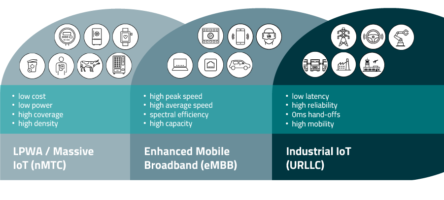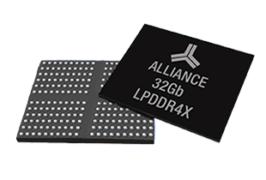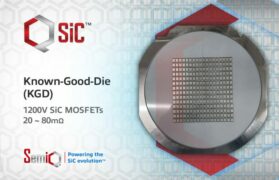Since launching the world’s first cellular embedded module in 1997, Sierra Wireless has realized an impressive series of IoT milestones. From its introduction of the first wide area network interface card in 1999, to being first to market with LTE embedded modules in 2010, to the release of its first dual-mode LPWA module and first LTE Advanced Pro module in 2017, Sierra Wireless has consistently been a pioneer in delivering customers innovative IoT solutions that empower them to thrive in an increasingly connected economy.
Earlier this month at its 5G innovation lab in Canada, Sierra Wireless marked another IoT milestone when it completed a 5G IoT data transmission for the first time. The test was conducted using the same M.2 form factor 5G module engineering sample, featuring Qualcomm’s Snapdragon X55 5G modem chipset, that Sierra Wireless first unveiled at Mobile World Congress in February.
During the test, Sierra Wireless established data connectivity in the sub 6 GHz band, using testing equipment from Agilent and Rhode & Schwartz. Over the coming months, Sierra Wireless plans to expand testing of its other 5G IoT modules, including completion of even faster data transmissions using 5G’s mmWave 26 GHz to 39 GHz bands.
A Wide Variety of Use Cases for New 5G IoT Applications
Sierra Wireless is already working with Original Equipment Manufacturers (OEMs), system integrators, and other customers to integrate Sierra Wireless’s upcoming 5G modules into their mobile computing, networking, and IoT products. These products will benefit from 5G’s multi-Gigabit data transfer speeds, lower latency, and ultra-high reliability. Customers are considering how they can use Sierra Wireless 5G modules for new use cases that go beyond what is possible today with 4G technologies, including new 5G IoT solutions in the following areas:
- Massive Machine Type Communication (mMTC): 5G enhances LTE-M and NB-IoT Low Power Wide Area (LPWA) IoT applications – including smart city, smart logistics, and smart meter applications – with evolved versions of these existing 4G standards. As we explained in our previous blog on how companies can integrate 5G into their IoT strategies, 5G enables LPWA applications to connect to more devices and use less power, building on LPWA’s current capacity and low power consumption benefits.










